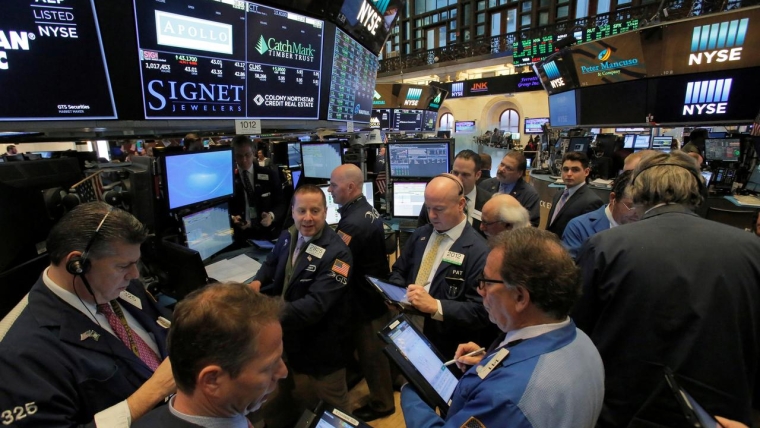
Currency markets were relatively contained on a night with relatively little news. GBP was an outperformer supported by both data and Brexit developments.
UK GDP rose 0.3% in July. This was the fastest growth in six months and beat expectations of 0.1%, suppressing fears of, at least a pre-Brexit, recession. The positive vibe was supported by second tier data with UK industrial production, manufacturing, construction, and trade data all beating (admittedly low) expectations. Having dipped below 1.2240 before the data, GBP popped to over 1.2380, before settling around 1.2350 currently.
GBP was also supported by PM Johnson’s comments that he would overwhelmingly prefer to get a Brexit agreement; a seemingly softer stance on a hard Brexit as the UK bill ruling out a no-deal Brexit on 31 October became law. A stronger GBP saw NZD/GBP briefly dip below 0.5200, before stabilising just above the figure.
NOK pipped GBP for top honours on the currency leader board overnight, with surprisingly strong Norway GDP and higher oil prices the drivers.
Brent Crude oil is up nearly 2%, at around US$62.70/bbl to its highest level in over a month. This extends last week’s gains and follows news that Saudi Arabia’s King Salman Bin Abdulaziz has named his son Prince Abdulaziz as the country’s energy minister. The Prince has signalled that OPEC and its allies would continue with output cuts.
The USD continued its pullback from a recent peak, edging marginally lower overnight on the indexes we follow. However, the USD was up a touch against a weaker JPY that underperformed in the pro risk environment. USD/JPY opens this morning around 107.20.
NZD was up smalls overnight, vying for its sixth consecutive daily gain from its previously oversold position. NZD opens this morning around 0.6430.
The NZD short-term outlook has improved, with the focus now switching to the October US-China trade talks. That said, we remain sceptical that trade talks over coming months will yield a comprehensive agreement that ends the US-China trade tensions. We’ve been down this path so many times over the past 18 months, with hopes of progress ultimately dashed. We see scope for the NZD to consolidate in a range, say 0.63 to 0.65, before its next leg lower into a 0.60 to 0.63 range we envisage later in the year.
Global bond yields have pushed meaningfully higher overnight, with a steepening bias. The move was led by German Bunds as investors seemingly become wary that the ECB may not deliver as much stimulus as previously anticipated. Thursday’s ECB meeting is shaping up as a major risk event.
The consensus looks for the ECB to cut the Deposit Rate 10bps to -0.50% (with nearly 25% of respondents tipping a 20bp cut), tiering of the deposit rate, and resuming QE at 30bn EUR a month. Given these high expectations of easing, we have been pointing out the risk that the ECB underwhelms. Yield moves overnight were driven by the long end suggesting investors’ nervous is mainly that the ECB might not restart QE. German 10 year Bund yields rose more than 5bps overnight, while the 2 year yield rose just over 1bp.
This flowed through to other markets. US 10 year Treasury yields poked above 1.63% at one point overnight to a two week high, and currency sits just below this level; still up more than 6bps on the day. This extends the correction started last week adding to the idea that the recent large drop in yields was overdone. Position unwinds have likely exacerbated the moves.
NZ yields were broadly lower yesterday. NZ swap yields eased across the curve, with a flattening bias. NZ 2 year swap declined half a basis point to close just under 0.96%, while 10 year swap fell nearly 5bps, to close at 1.265%. We can expect some upward pressure on local yields today, given offshore moves overnight. That said there may be some caution in taking yields to far, with domestic growth concerns still circulating.
Yesterday’s NZ manufacturing data for the second quarter was the latest to question the pace of growth in NZ. Sales volumes fell 2.7% in the quarter. While we judge production was not quite as negative as sales suggest, we do think the manufacturing sector will be a drag on economic growth in the quarter. We have nudged down our pick for Q2 GDP to 0.3% from 0.4% previously, suggesting a touch more downside risk to the RBNZ’s 0.5% forecast. Q2 GDP figures are due out Thursday next week (19 September).
Today we have electronic card transactions (ECT), ANZ’s Truckometer, and Manpower’s employment survey all due. A lack of bounce in the ECT data would dim our view on Q3 retail sales volume growth, if not flatten it altogether, and add to domestic growth concerns but, really, none of the local data are expected to materially move markets.
Offshore, the latest NAB business survey is due in Australia and Chinese inflation gauges will be of some interest. But markets are likely to be in countdown mode to the ECB’s meeting on Thursday.

We welcome your comments below. If you are not already registered, please register to comment
Remember we welcome robust, respectful and insightful debate. We don't welcome abusive or defamatory comments and will de-register those repeatedly making such comments. Our current comment policy is here.